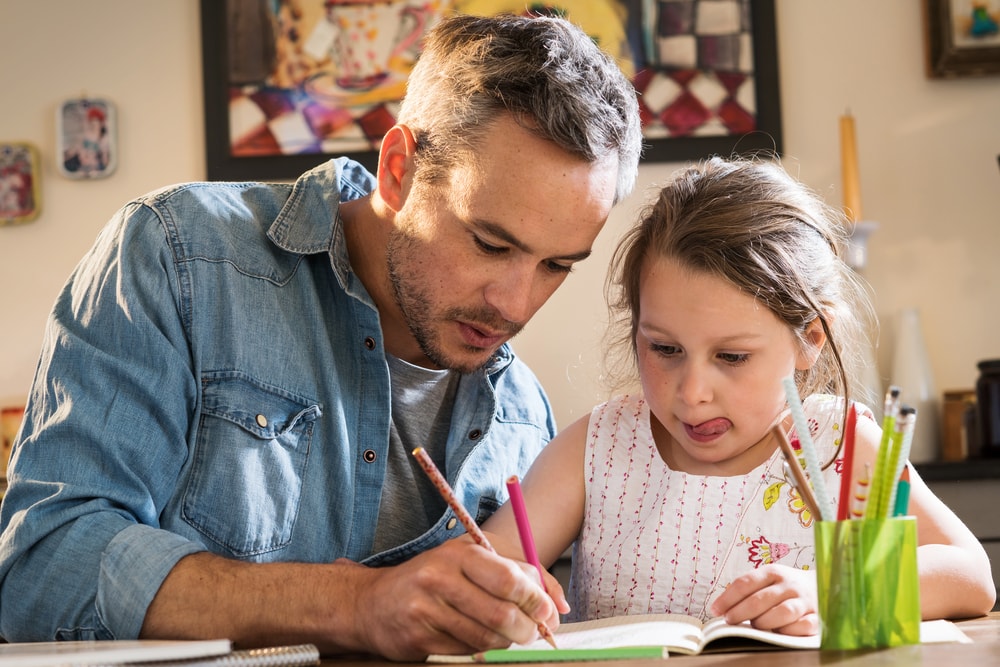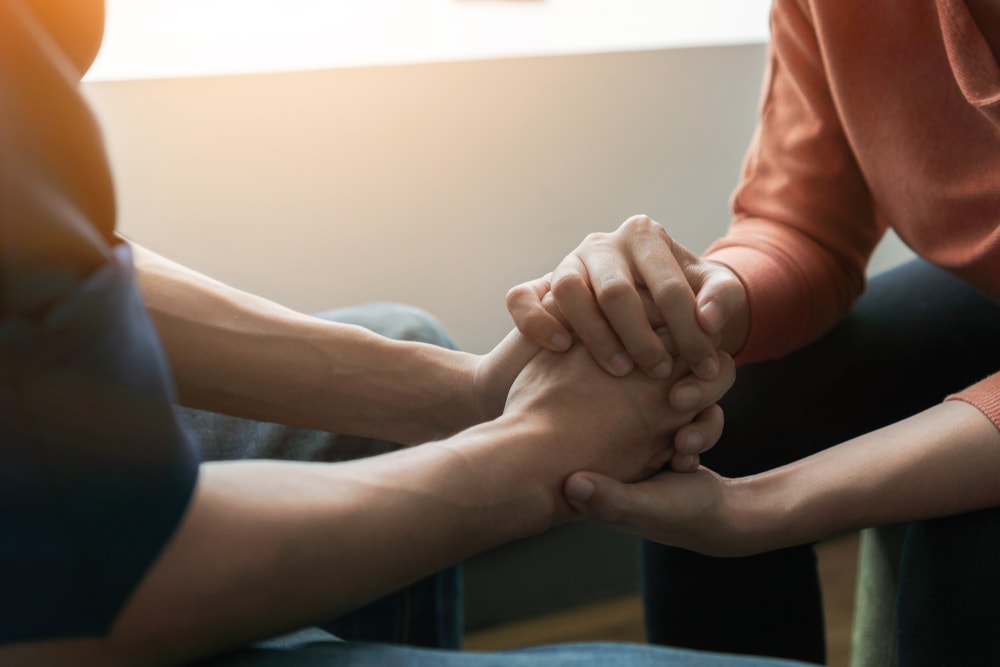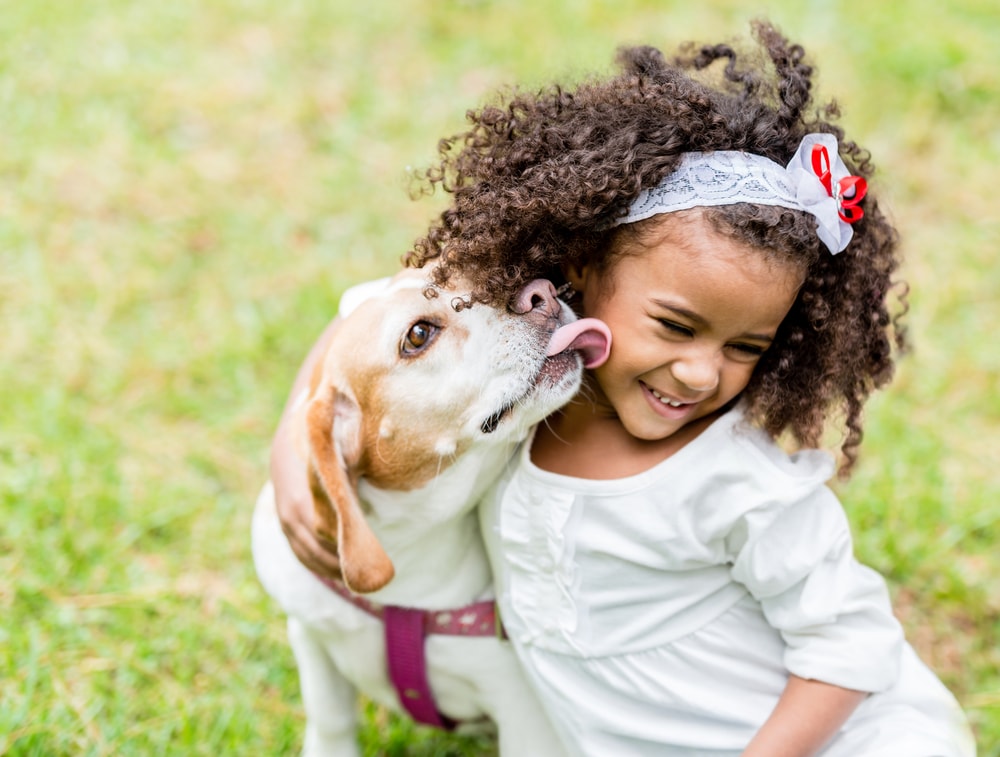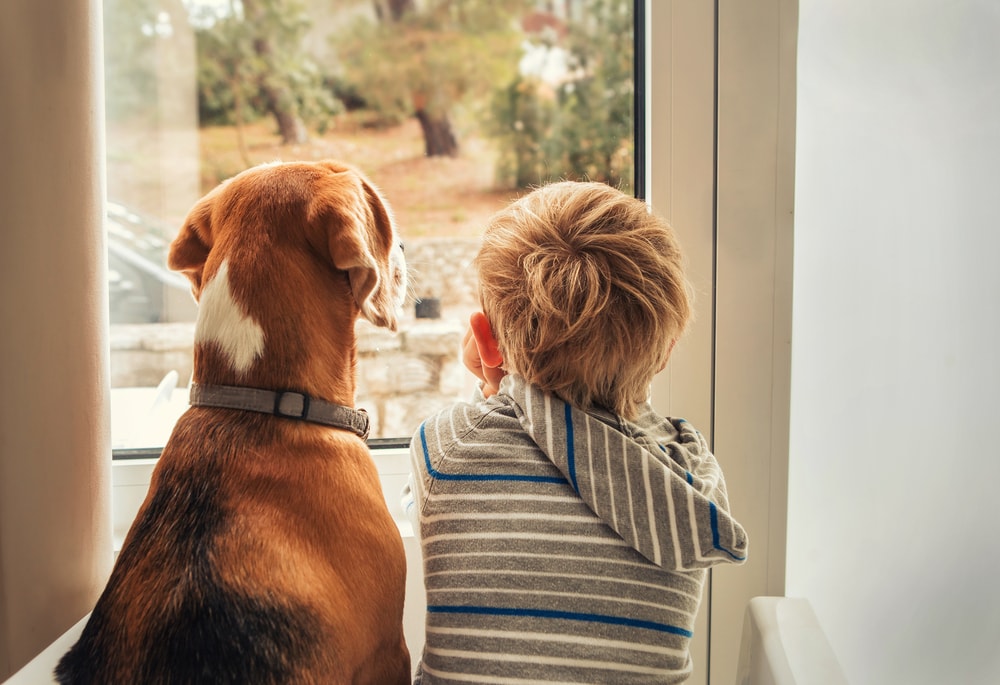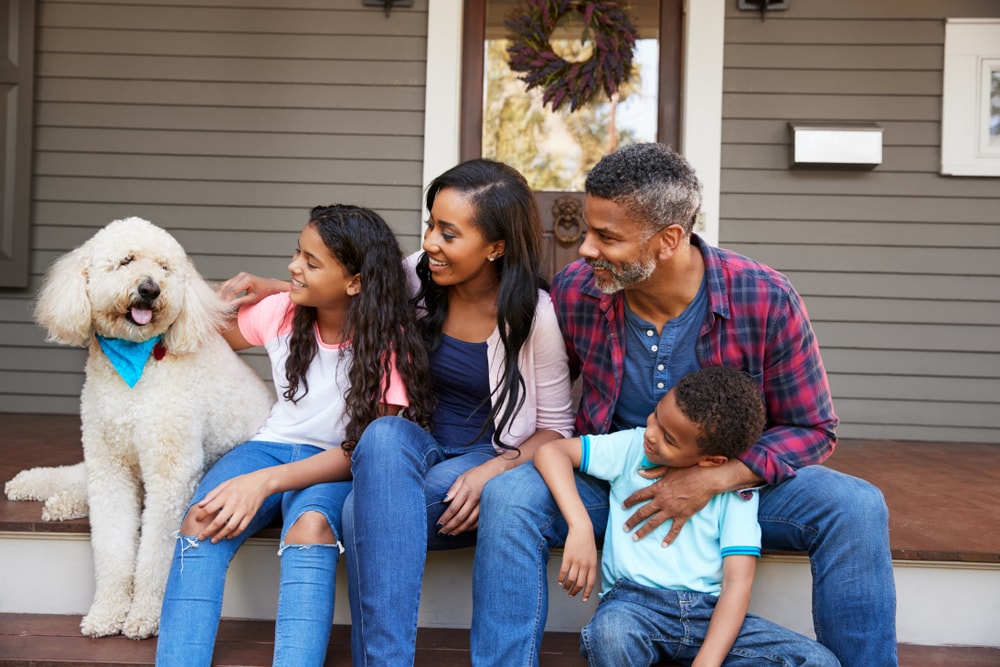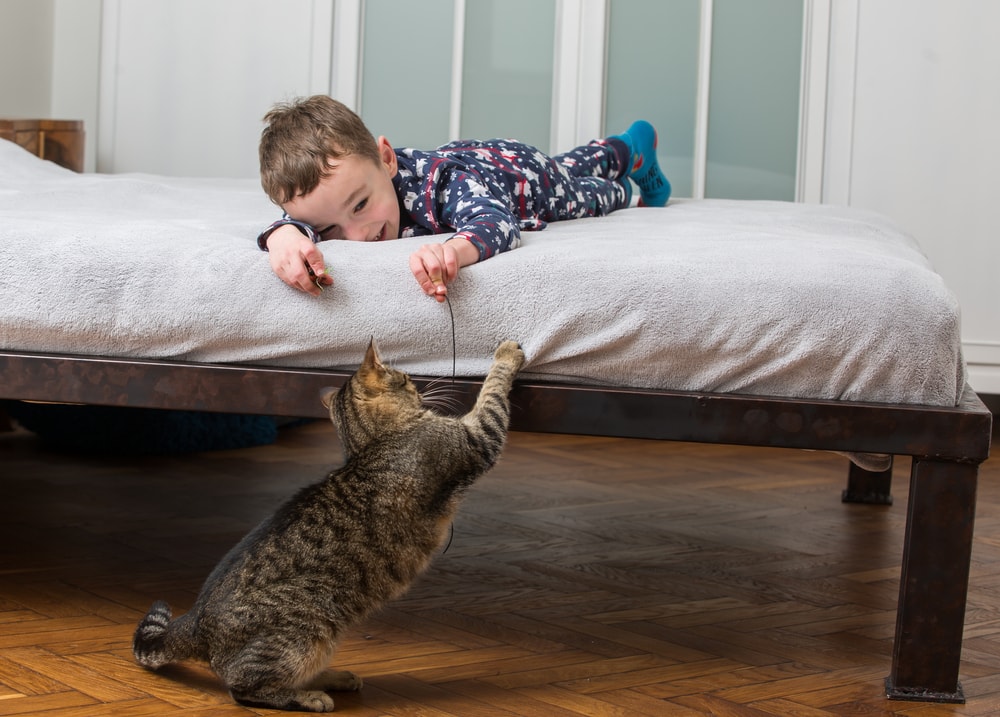
After the loss of a loved one, you may feel a little lost and alone, clinging to your faith in God, despite present circumstances. You may even be struggling this Easter to trust in God’s love, to rely on His promises, or to believe He’s right there with you. But don’t forget what Easter is all about – it’s about Jesus conquering death and bringing hope to all who believe in Him. As you wrestle through your feelings of grief this Easter, set aside some time to sit quietly, think, pray, and meditate on peaceful, uplifting thoughts.
This Easter, we have gathered a few readings to bring comfort as you process your feelings about loss and faith. We hope that you take courage and hope from these words and remember that God is with you every step of the way.
Scripture Verses
Psalm 23 (English Standard Version)
Psalm 23 is one of the most well-known passages in the Bible. If you are grieving a loss, it may feel like you are going through the “valley of the shadow of death” that David describes in Psalm 23. Yet this scripture reminds us that even in our darkest times, God is with us, walking right next to us. And just as He did not leave his Son in the tomb, He will not leave us in the valley of grief. He prepares a table before us, showers us with goodness and mercy, and draws us to Himself so that our joy will be full.
The Lord is my shepherd; I shall not want.
He makes me lie down in green pastures.
He leads me beside still waters.
He restores my soul.
He leads me in paths of righteousness for his name’s sake.
Even though I walk through the valley of the shadow of death,
I will fear no evil, for you are with me; your rod and your staff, they comfort me.
You prepare a table before me in the presence of my enemies; you anoint my head with oil; my cup overflows.
Surely goodness and mercy shall follow me all the days of my life, and I shall dwell in the house of the Lord forever.
1 Corinthians 15: 51 – 57 (New Living Translation)
Easter is about hope and restoration. Losing a loved one reminds us how fragile and fleeting life is. But hope reminds us that we will one day be reunited with those we love. As 1 Corinthians 15 reminds us, death does not last forever. Jesus has conquered death and the grave!
But let me reveal to you a wonderful secret. We will not all die, but we will all be transformed! It will happen in a moment, in the blink of an eye, when the last trumpet is blown. For when the trumpet sounds, those who have died will be raised to live forever. And we who are living will also be transformed. For our dying bodies must be transformed into bodies that will never die; our mortal bodies must be transformed into immortal bodies.
Then, when our dying bodies have been transformed into bodies that will never die, this Scripture will be fulfilled:
“Death is swallowed up in victory.
O death, where is your victory?
O death, where is your sting?”
For sin is the sting that results in death, and the law gives sin its power. But thank God! He gives us victory over sin and death through our Lord Jesus Christ.
Romans 8: 35, 37 – 39 (New Living Translation)
The loss of someone you love may have left a gaping hole in your heart that feels like it can never be filled. Questions and doubts about God’s love may rise up. Anger and disappointment at God can drive you further from peace. This passage in Romans reminds us that nothing, not even death, can separate us from God’s love. Though you may feel far away from His love in the moment, there is nothing in creation that can separate you from His love. Jesus’ death and resurrection on Easter morning has made sure of it.
Can anything ever separate us from Christ’s love? Does it mean he no longer loves us if we have trouble or calamity, or are persecuted, or hungry, or destitute, or in danger, or threatened with death?No, despite all these things, overwhelming victory is ours through Christ, who loved us.
And I am convinced that nothing can ever separate us from God’s love. Neither death nor life, neither angels nor demons, neither our fears for today nor our worries about tomorrow—not even the powers of hell can separate us from God’s love. No power in the sky above or in the earth below—indeed, nothing in all creation will ever be able to separate us from the love of God that is revealed in Christ Jesus our Lord.
Poems & Quotes
Poems and quotes can speak volumes and give our minds little nuggets of wisdom to treasure. Here are just a few selections for Easter poems that we hope speak to your grieving heart and bring comfort and peace.
Easter Joy (by Joanna Fuchs)
Jesus came to earth,
To show us how to live,
How to put others first,
How to love and how to give.
Then He set about His work,
That God sent Him to do;
He took our punishment on Himself;
He made us clean and new.
He could have saved Himself,
Calling angels from above,
But He chose to pay our price for sin;
He paid it out of love.
Our Lord died on Good Friday,
But the cross did not destroy
His resurrection on Easter morn
That fills our hearts with joy.
Now we know our earthly death,
Like His, is just a rest.
We’ll be forever with Him
In heaven, where life is best.
So we live our lives for Jesus,
Think of Him in all we do.
Thank you Savior; Thank you Lord.
Help us love like you!
Life’s Daily Doses (by Lenora McWhorter)
Life is measured in daily doses
Of trials and pleasures each.
Day by day grace is dispensed
To meet our immediate needs.
Comfort comes to the weary
We find that which we seek.
A bridge is built at the river
And power is given to the weak.
One day’s load we have to bear
As we travel on life’s way.
Wisdom is given for the occasion
And strength to equal each day.
We are never required to stagger
Under tomorrow’s heavy load.
We journey one day at a time
As we travel life’s rugged road.
God’s mercy is new every morning
And His faithfulness is sure.
God perfects all that concerns us
And by our faith, we will endure.
Celebrate Our Savior (by Joanna Fuchs)
On Easter morn, we celebrate our Savior;
Whatever people seek in Him, they find.
In history, there has never been another
So holy, sacrificial, good and kind.
His resurrection makes us all immortal;
In heaven, we’ll be together with our King.
Eternally we’ll share in all His blessings;
Happy Easter! Jesus Christ is everything!
Quotes
The very first Easter taught us this: that life never ends and love never dies. -Kate McGahan
We proclaim the resurrection of Christ when his light illuminates the dark moments of our existence. -Pope Francis
God loves each of us as if there were only one of us. -Saint Augustine
The greatest gift of Easter is hope. -Basil Hume
Music & Lyrics
Finally, music can speak to us in a way that gets past our mind’s defenses and goes straight to our hearts. These classic hymns are reminders of all that Jesus accomplished on Easter morning.
Amazing Grace (John Newton)
Amazing grace, how sweet the sound
That saved a wretch like me
I once was lost, but now I am found
Was blind, but now I see
‘Twas grace that taught my heart to fear
And grace my fears relieved
How precious did that grace appear
The hour I first believed
Through many dangers, toils and snares
We have already come
‘Twas grace has brought us safe thus far
And grace will lead us home
When we’ve been there ten thousand years
Bright, shining as the sun
We’ve no less days to sing God’s praise
Than when we’ve first begun
Because He Lives (Bill & Gloria Gaither)
How sweet to hold a newborn baby
And feel the pride and the joy that he gives
Oh but greater still, the calm assurance
We can face uncertain days because He lives
And because He lives, I can face tomorrow
Because He lives, all fear is gone
Because I know He holds the future
And life is worth a living just because He lives
And then one day, I’ll cross that river
I’ll fight life’s final war with pain
And then as death gives way to victory
I’ll see the lights of glory and I’ll know He reigns
Because He lives, I can face tomorrow
Because He lives, all fear is gone
Because I know He holds the future
And life is worth a living just because He lives
May these words of hope, of death conquered, of life with God, give you hope and encouragement as you grieve the loss of someone dear to you. God is near, and He will not leave your side.

















